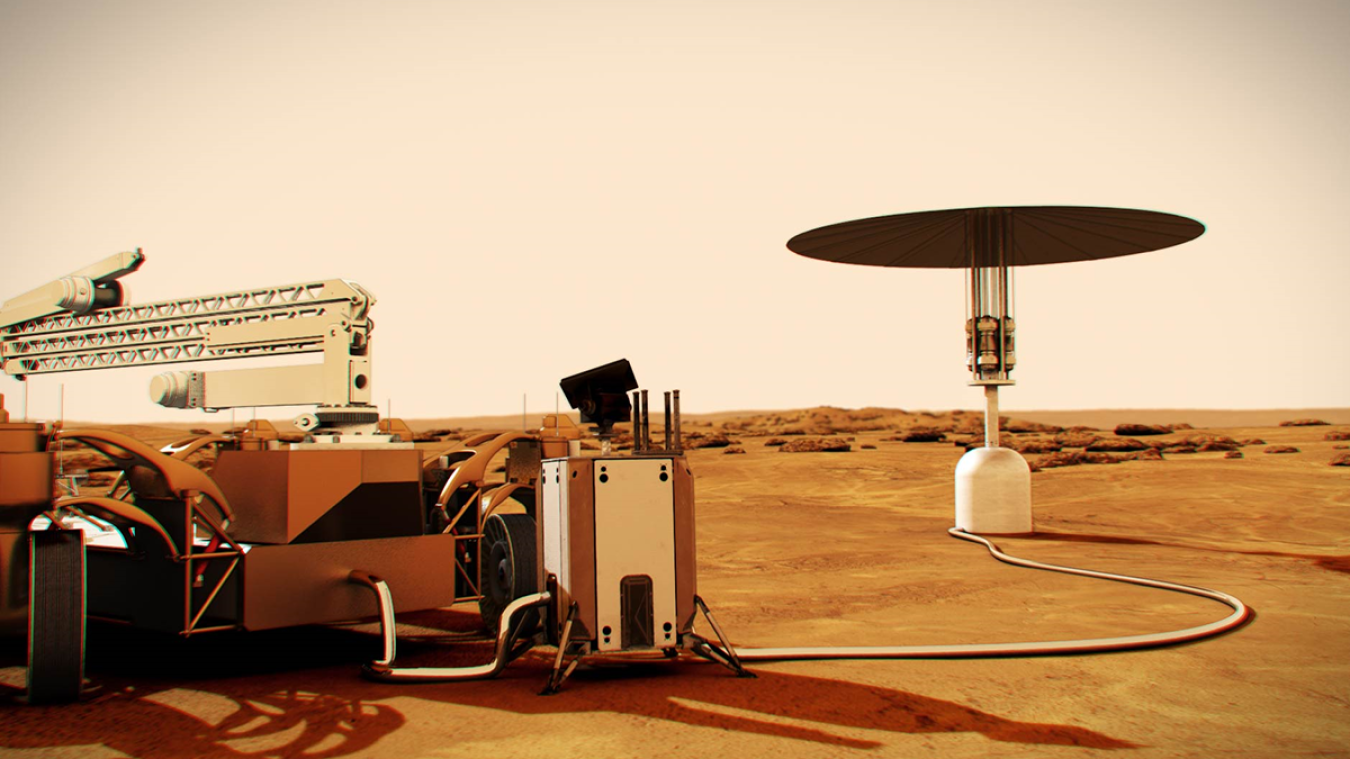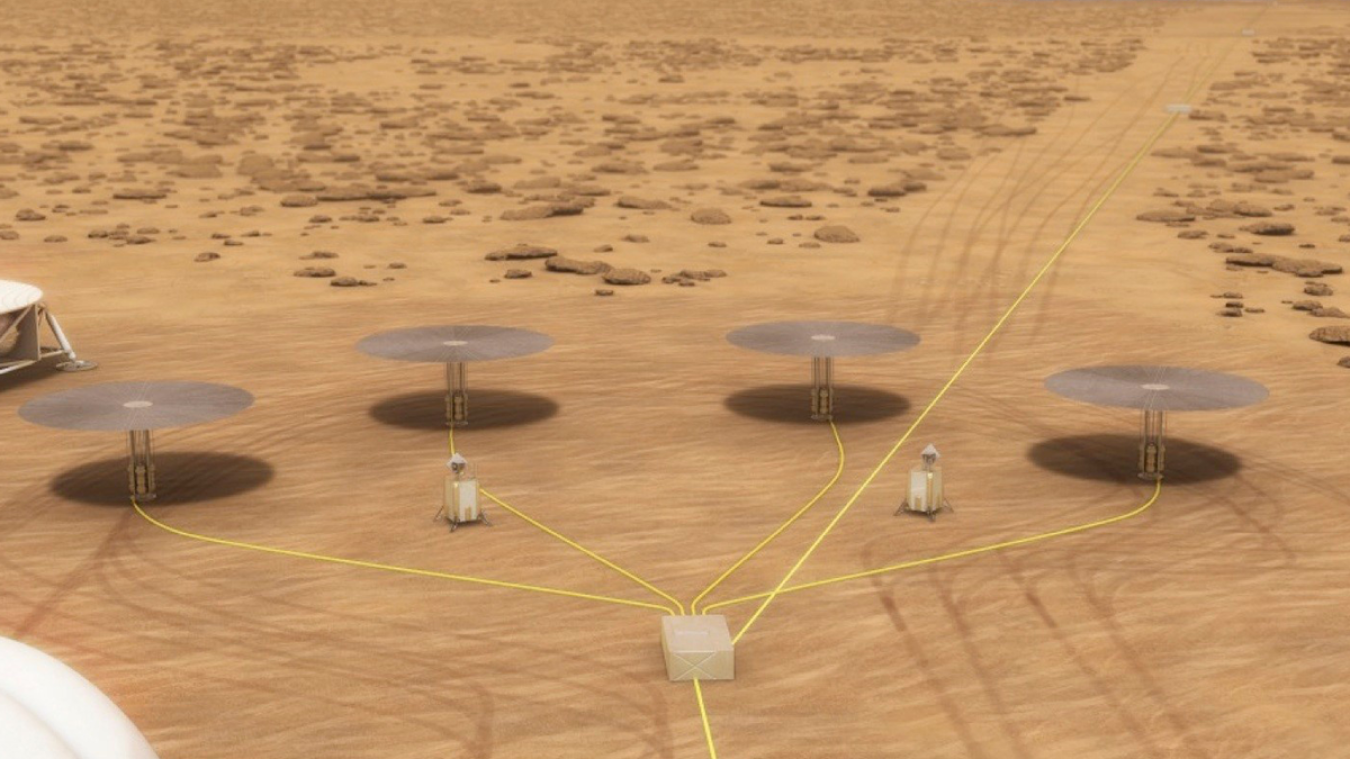NASA and DOE are working to develop a fission surface power system that could ultimately lead to extended missions on the Moon and Mars.
January 13, 2026
As astronauts look to explore the Moon and Mars, they’ll need a reliable energy source to power their equipment and outposts. The U.S. Department of Energy (DOE) is working with NASA and industry to develop a fission surface power system that could be ready to launch within the decade.
The successful deployment and operation of this nuclear power system on the lunar surface could ultimately lead to extended missions on the Moon, Mars, and beyond.
Here are 5 things you need to know about NASA and DOE’s latest venture in space exploration.
1. Fission surface power systems are powered by … well … fission
A fission surface power system works by splitting uranium atoms inside a reactor to generate heat that is then converted to electricity. This is the same physical process used by terrestrial reactors to generate power for use in homes, businesses, and industrial applications.
DOE and NASA are looking to partner with U.S. companies to develop a fission surface power system for demonstration on the Moon. The system will leverage the latest innovations in advanced reactor development and must meet certain mission requirements such as the ability to operate autonomously to match energy demand.
2. Fission surface power units can provide kilowatts of electricity
The fission surface power demonstration is expected to generate up to 40 kilowatts of electricity — enough to power four-hundred 100-watt light bulbs or roughly 1/25,000 of the power produced by a typical 1,000-megawatt commercial reactor. That may not seem like a lot of juice, but it will be enough to power a portion of the infrastructure and equipment needed by astronauts on the lunar surface.
As power needs for future missions grow, fission surface power systems could be scaled up to produce higher power levels to support permanent habitats, in-situ resource utilization, and additional complex infrastructure and science operations.

3. Fission power systems will operate where the sun doesn’t shine
Fission power systems will provide consistent base load power regardless of the resources available on a planet or the environment.
NASA plans to land astronauts at the Moon’s south pole, where solar energy is unable to provide sufficient, sustained power for extended missions. Lunar nights are equivalent to 14 days on Earth, and reliable electricity provided by fission power systems will be needed to survive extreme temperatures.
The initial demonstration is expected to last for a minimum of one year, but the system will be designed for longer operation to gather additional information. It may also be used as part of the lunar power infrastructure.
4. Fission surface power systems will be robust
Unlike terrestrial reactors, a surface power system for space must withstand the harsh vibration forces that occur during a launch or landing on a planet’s surface. To accomplish this, the units will have structural robustness to protect the coolant, reactor core, and electronic control systems, along with the support system that holds it all together. This also allows them to operate in the extreme temperature environment found on the moon.
5. This type of system isn’t new — but hasn’t been used on another world (yet)
Nuclear space reactors were first developed in the United States in the 1950s by NASA and the Atomic Energy Commission (now known as DOE) through its SNAP program. SNAP-10A, a sodium-potassium cooled fast reactor, was launched into space in April 1965 as part of a research project for the U.S. Department of Defense to power a satellite.
The reactor produced 500 watts of power and operated for 43 days during its flight test.
Since that time, advances in nuclear fuels and materials research supported by DOE have led to smaller, compact advanced reactor systems that are currently being designed today. DOE and NASA are looking to leverage this innovation and expertise to apply these concepts for space flight.
Learn more about NASA’s Moon to Mars exploration and DOE’s role in space to support NASA space missions.
*Updated January 2026

